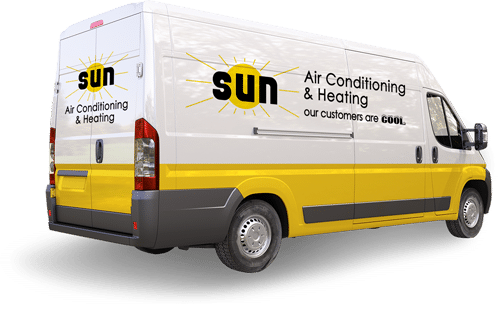Glossary
HVAC Glossary Of Terms
Glossary terms and technical definitions for heating, cooling and indoor air quality products.
AFUE
Annualized Fuel Utilization Efficiency is a measure of your furnace’s heating efficiency. The higher the AFUE percentage, the more efficient the furnace. The minimum percentage established by the DOE for furnaces is 78%.
Airflow
The distribution or movement of air.
Air-Conditioning and Refrigeration Institute (ARI)
ARI is an industry trade association that develops standards for measuring and certifying product performance. For instance, ARI Standard 270 provides guidelines for establishing sound levels for outdoor air-conditioning equipment.
Air Handler/Coil Blower
The indoor part of an air conditioner or heat pump that moves cooled or heated air throughout the ductwork of your home. An air handler is usually a furnace or a blower coil.
Bioaerosols
Microscopic living organisms suspended in the air that grow and multiply in warm, humid places.
BTU
A British thermal unit is a unit of heat energy. One Btu is the amount of heat required to raise one pound of water by one degree Fahrenheit. The higher the Btu rating, the greater the heating capacity of the system.
BTUH
British thermal units per hour.
CAE
The Combined Annual Efficiency is a measure of the amount of heat produced for every dollar of fuel consumed for both home and water heating.
Carbon Monoxide
An odorless, colorless, tasteless, poisonous and flammable gas that is produced when carbon burns with insufficient air.
Central Air Conditioning System
A system in which air is treated at a central location and distributed to and from rooms by one or more fans and a series of ducts.
CFM
Stands for Cubic Feet per Minute. This measurement indicates how many cubic feet of air pass by a stationary point in one minute. The higher the number, the more air is being moved through the ductwork by the system.
Composite Fan Blades
Used in select Trane outdoor air conditioner or heat pump units, blades are manufactured with rugged materials and an exclusive angled design that improves operation and durability, even in the harshest environments.
Compressor
The part of the outdoor air conditioner or heat pump that compresses and pumps refrigerant to meet household cooling requirements.
Communication Module
A component of a SunSource® Home Energy System, a communication module allows you to view system status and environmental benefits in real-time.
Condenser Coil
The outdoor portion of an air conditioner or heat pump that either releases or collects heat, depending on the time of the year.
Damper
A movable plate, located in the ductwork, that regulates airflow. Dampers are used to direct air to the areas that need it most. Typically used in a zoning application.
DB
A decibel is a unit used to measure the relative intensity of sound.
DOE
The Department of Energy is a federal agency responsible for setting industry efficiency standards and monitoring the consumption of energy sources.
Dual Fuel
A comfort system that pairs an electric heat pump with a gas furnace, providing an energy-efficient alternative to the conventional furnace/air conditioner combination.
Ductwork
The method by which air is channeled from the furnace or the blower coil throughout your home.
Electronic Air Cleaner
An electronic device that filters out large particles and bioaerosols in indoor air.
ENERGY STAR®
An EPA (Environmental Protection Agency) designation attached to HVAC products that meet or exceed EPA guidelines for high-efficiency performance above the standard government minimums.
EPA
The Environmental Protection Agency develops and enforces federal environmental regulations. The EPA oversees the nationwide ENERGY STAR® program.
Evaporator Coil
The part of the air conditioner or heat pump that is located inside the air handler or attached to the furnace. Its primary function is to absorb the heat from the air in your house.
FAQ
Stands for “frequently asked questions.”
Grid-tied
A grid-tied system is the most common and least expensive of all residential solar systems. It allows you to use your own solar-generated electricity to save energy and reduce costs. At times when the solar system isn’t producing electricity, such as at night, electricity is provided by the utility company’s grid or network of power stations.
Heat Exchanger
Located in the furnace, the heat exchanger transfers heat to the surrounding air, which is then pumped throughout the home.
Heat Pump
A heat pump is an HVAC unit that heats or cools by moving heat. During the winter, a heat pump draws heat from outdoor air and circulates it through your home’s air ducts. In the summer, it reverses the process and removes heat from your house and releases it outdoors.
Horizontal Flow
When an air handler or furnace is positioned on its side and circulates air in one end and out the other. Ideal for attic or crawl space installations.
HSPF
The Heating Seasonal Performance Factor is the heating efficiency rating for heat pumps. The higher the rating, the more efficient the heat pump. HSPF will be regulated in 2006 at 7.7.
Humidifier
An indoor air quality device that introduces moisture to heated air as it passes from the furnace into the ductwork for distribution throughout the home.
Humidistat
An automatic device used to maintain humidity at a fixed or adjustable set point.
HVAC
Heating, Ventilation and Air Conditioning.
Indoor Coil
See Evaporator Coil.
Interconnection Agreement
(See “net metering.”)
ISO 9000
A family of international standards for quality management and assurance.
MERV Rating
The MERV (Minimum Efficiency Reporting Value) rating of a filter describes the size of the holes in the filter that allow air to pass through. The higher the MERV rating, the smaller the holes in the filter, the higher the efficiency.
Micron
A unit of measure equal to one-millionth of a meter, or one-thousandth of a millimeter.
Net Metering
With this service, which is available from many utility providers, you can get full retail value for most, if not all, of the electricity produced by your own generating system, such as a SunSource® Home Energy System. Your utility meter keeps track of the “net” difference between the electricity you use from your utility provider and the electricity you produce with your own system.
Odors/Chemicals
Air contaminants in the form of gases.
Off-grid or Off-the-grid
An off-grid electricity-generating system operates independently from the utility grid, providing all of the electricity needed in the home. Stand-alone systems are much more expensive than grid-tied systems. However, for homes located in remote areas without utility service, or where installing power lines would be extremely costly, a stand-alone system is a good option.
Outdoor Coil
See Condenser Coil.
Particles
Any substances measuring less than 100 microns in diameter. The EPA has found that small particles (less than 2.5 microns) are responsible for the health effects of greatest concern.
Programmable Thermostat
A thermostat with the ability to record different temperature/time settings for your heating and/or cooling equipment.
R-410A Refrigerant
A chlorine-free refrigerant that meets the EPA’s newest, most stringent environmental guidelines.
Refrigerant
A chemical that produces a cooling effect while expanding or vaporizing. Most residential air conditioning units contain the standard R-22 refrigerant or Freon.
Refrigerant Lines
Two copper lines that connect the outdoor air conditioner or heat pump to the indoor evaporator coil.
Scroll Compressor
A specially designed compressor that works in a circular motion, as opposed to up-and-down piston action.
SEER
The Seasonal Energy Efficiency Ratio is an energy efficiency rating for air conditioners. The higher the SEER, the better the energy performance, the more you save. The DOE’s established minimum SEER rating for cooling is 13.00.
Single Package
A heating and cooling system contained in one outdoor unit.
Split System
An HVAC system in which some components are located inside the structure of the house and some are located outside. Split systems should be matched for optimal efficiency.
Thermostat
Monitors temperature and humidity and adjusts heating or cooling system to maintain desired levels.
Thermostat
Usually found on an inside wall, this device operates as a control to regulate your heating and cooling equipment, allowing you to adjust your home comfort at the touch of a switch.
Ton
Unit of measurement for determining cooling capacity. One ton equals 12,000 Btuh.
Two-Stage Operation
It provides two levels of heating or cooling output for greater temperature control, energy efficiency and improved indoor air quality.
Upflow
When an air handler or furnace is installed in an upright position and circulates air through the side or bottom and out through the top. Typically used in basement, closet and attic installations.
Variable Speed Motor
A motor that automatically adjusts the flow of warm or cool air for ultimate comfort.
Ventilator
A system that exchanges stale, recirculated indoor air with fresh, filtered outside air.
Zoning
A method of partitioning a home into independently controlled comfort zones for enhanced comfort and efficiency.
 Rated 5.0 out of 5.0
Rated 5.0 out of 5.0


